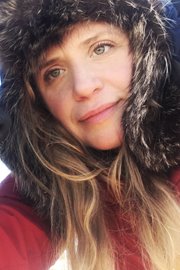For National Geographic
03 August, 2018
Wild horses roam in the Pleistocene Park located along the Kolyma River, near Chersky, Siberia. The Pleistocene Park is a nature reserve, research station and large-scale scientific experiment established by geophysicist Sergey Zimov and his son Nikita. They believe that by recreating the ecosystem of the Pleistocene era, which was dominated by grasslands and large mammals, they can slow down permafrost thaw.
The Arctic permafrost is thawing at a faster rate than climatologists predicted, releasing carbon gases that could speed up global heating. Permafrost is carbon-rich frozen soil that covers 24% of the Northern Hemisphere land mass, encompassing vast stretches of territory across Alaska, Canada, Siberia and Greenland. It is a combination of soil, rocks and sand held together by ice and containing large amounts of organic carbon—frozen plant material that doesn’t decompose. As permafrost thaws, this material rots, releasing carbon dioxide and shorter-lived methane. Methane can be between 25 and 86 times more potent than CO2 as a greenhouse gas, depending on the timeframe of measurement. The thaw impacts people living in the region—particularly indigenous communities following centuries-old lifestyles. Thawing permafrost undermines house foundations, makes the landscape more difficult to navigate and causes ice cellars (homemade freezers dug into the permafrost) to flood and provisions to spoil.

Katie Orlinsky
Katie Orlinsky was born and raised in New York City, USA and began her career as a photographer in 2007. Orlinsky has photographed all over the world, documenting everyt...